Refine search
Actions for selected content:
12661 results in History of science
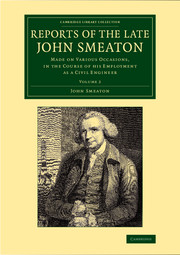
Reports of the Late John Smeaton
- Made on Various Occasions, in the Course of his Employment as a Civil Engineer
-
- Published online:
- 05 June 2016
- Print publication:
- 11 September 2014
- First published in:
- 1812
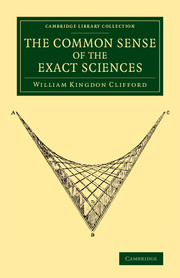
The Common Sense of the Exact Sciences
-
- Published online:
- 05 June 2016
- Print publication:
- 25 September 2014
- First published in:
- 1885

Journal of a Tour in Marocco and the Great Atlas
- With an Appendix Including a Sketch of the Geology of Marocco
-
- Published online:
- 05 June 2016
- Print publication:
- 18 September 2015
- First published in:
- 1878
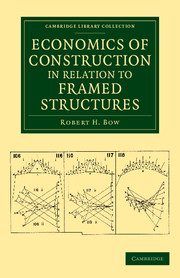
Economics of Construction in Relation to Framed Structures
-
- Published online:
- 05 June 2016
- Print publication:
- 25 September 2014
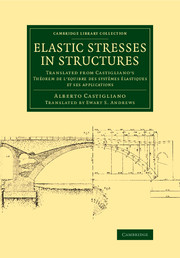
Elastic Stresses in Structures
- Translated from Castigliano's Théorem de l'equibre des systèmes élastiques et ses applications
-
- Published online:
- 05 June 2016
- Print publication:
- 25 September 2014
- First published in:
- 1919
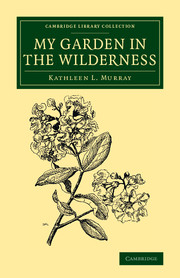
My Garden in the Wilderness
-
- Published online:
- 05 June 2016
- Print publication:
- 19 February 2016
- First published in:
- 1915

Minéralogie des volcans
- Ou, description de toutes les substances produites ou rejetées par les feux souterrains
-
- Published online:
- 05 June 2016
- Print publication:
- 25 September 2014
- First published in:
- 1784

Reports of the Late John Smeaton
- Made on Various Occasions, in the Course of his Employment as a Civil Engineer
-
- Published online:
- 05 June 2016
- Print publication:
- 11 September 2014
- First published in:
- 1812
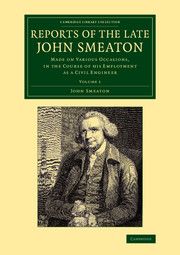
Reports of the Late John Smeaton
- Made on Various Occasions, in the Course of his Employment as a Civil Engineer
-
- Published online:
- 05 June 2016
- Print publication:
- 11 September 2014
- First published in:
- 1812
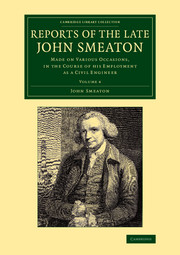
Reports of the Late John Smeaton
- Made on Various Occasions, in the Course of his Employment as a Civil Engineer
-
- Published online:
- 05 June 2016
- Print publication:
- 11 September 2014
- First published in:
- 1814

The Evolution of the Parsons Steam Turbine
- An Account of Experimental Research on the Theory, Efficiency, and Mechanical Details of Land and Marine Reaction and Impulse-Reaction Turbines
-
- Published online:
- 05 June 2016
- Print publication:
- 11 September 2014
- First published in:
- 1911
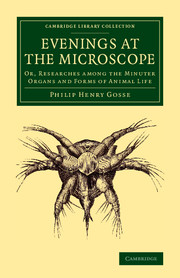
Evenings at the Microscope
- Or, Researches among the Minuter Organs and Forms of Animal Life
-
- Published online:
- 05 June 2016
- Print publication:
- 02 July 2015
- First published in:
- 1859
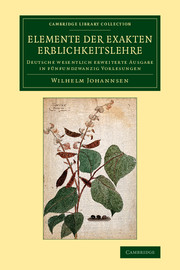
Elemente der exakten Erblichkeitslehre
- Deutsche wesentlich erweiterte Ausgabe in fünfundzwanzig Vorlesungen
-
- Published online:
- 05 June 2016
- Print publication:
- 21 May 2015
- First published in:
- 1909
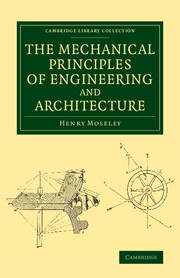
The Mechanical Principles of Engineering and Architecture
-
- Published online:
- 05 June 2016
- Print publication:
- 25 September 2014

A Bibliography of the Writings of Dr William Harvey
- 1578–1657
-
- Published online:
- 05 June 2016
- Print publication:
- 12 September 2013
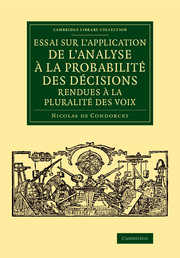
Essai sur l'application de l'analyse à la probabilité des décisions rendues à la pluralité des voix
-
- Published online:
- 05 June 2016
- Print publication:
- 25 September 2014
- First published in:
- 1785
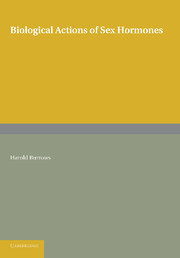
Biological Actions of Sex Hormones
-
- Published online:
- 05 June 2016
- Print publication:
- 31 October 2013
2 - Newton's concepts of force and mass, with notes on the laws of motion
-
-
- Book:
- The Cambridge Companion to Newton
- Published online:
- 05 July 2016
- Print publication:
- 29 March 2016, pp 61-92
-
- Chapter
- Export citation
4 - The methodology of thePrincipia
-
-
- Book:
- The Cambridge Companion to Newton
- Published online:
- 05 July 2016
- Print publication:
- 29 March 2016, pp 187-228
-
- Chapter
- Export citation
6 - Newton and celestial mechanics
-
-
- Book:
- The Cambridge Companion to Newton
- Published online:
- 05 July 2016
- Print publication:
- 29 March 2016, pp 261-288
-
- Chapter
- Export citation
